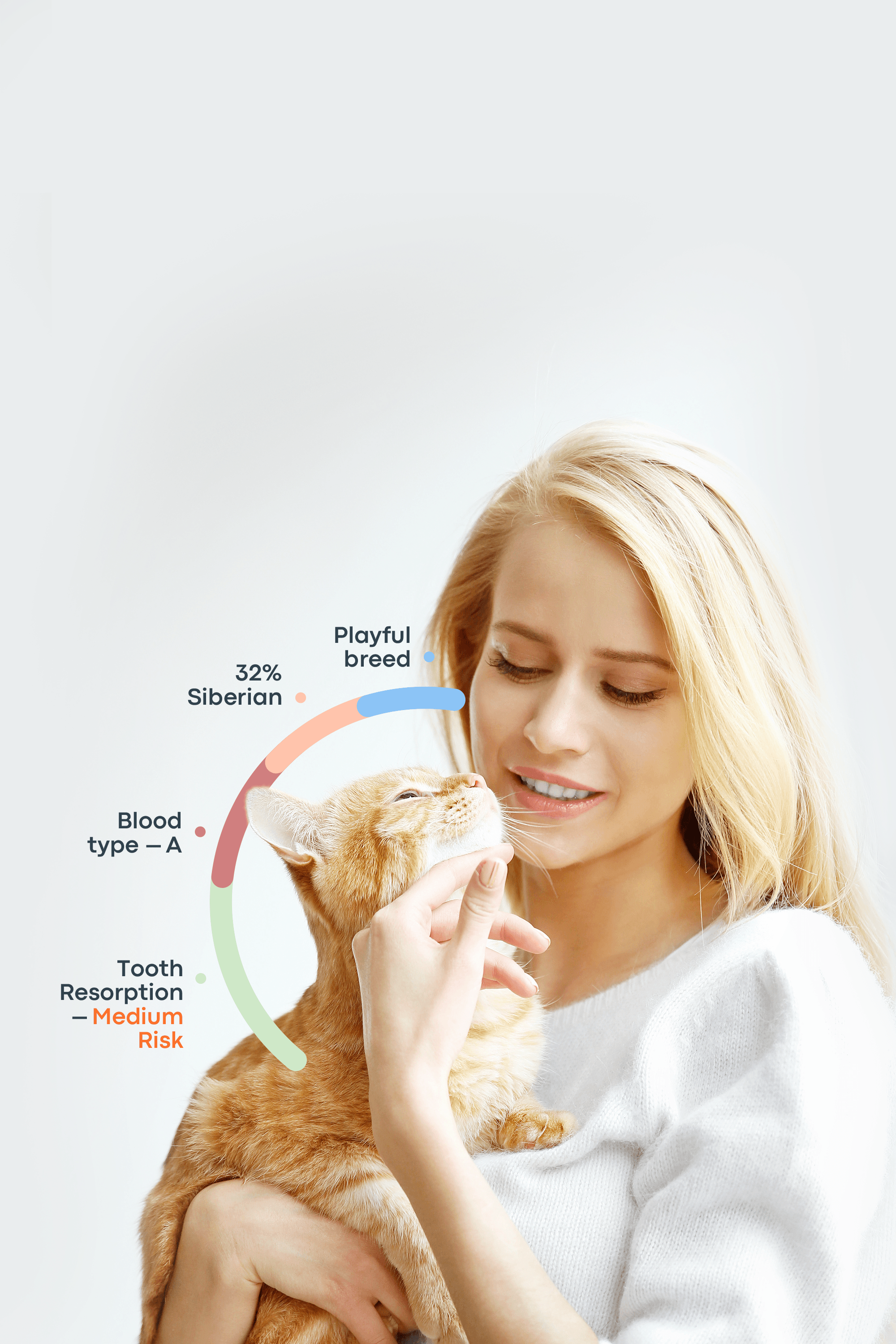Heterochromia is a condition where a dog’s irises are two different colors. It can affect one eye partially or result in each eye being a completely different color. While it may look unusual, this condition is typically harmless and does not affect a dog’s vision.
Heterochromia has inspired various myths and cultural beliefs. Native Americans have referred to dogs with this trait as having “ghost eyes,” while some Eastern European pagan traditions suggest these dogs have swapped eyes with a witch.
If you are thinking about adopting or purchasing a puppy with heterochromia, this guide will help you understand what the condition is, what to expect, and whether there are any related health concerns to be aware of.

Types of Heterochromia in Dogs
Types of Heterochromia | Description | How it appears | Breeds affected | Health issues |
Complete | Each eye is a different color | One solid color per eye, e.g., one green and one blue | Australian cattle dogs, Australian shepherds, Dalmatians, and Siberian huskies | Rare |
Sectoral | Part of one iris is a different color | Split, marbled, flecked | Border Collies, Catahoula Leopard Dogs, Shetland Sheepdogs, Great Danes with harlequin coats, Dalmatians, etc. | In some cases, affected Dalmatians also have deafness |
Central | The inner ring of the iris is a different color from the outer part | Halo or sunburst pattern | Australian Shepherds, Border Collies, Siberian Huskies, Dachshunds, Chihuahuas, Catahoula Leopard Dogs, Great Danes, Shetland Sheepdogs, and Shih Tzus | Rare |
Complete Heterochromia
Complete heterochromia occurs when each of a dog’s eyes is a completely different color—for example, one eye may be deep brown while the other is bright blue. This striking difference is also known as heterochromia iridum. According to the experts at Lawndale Vets, dogs with hereditary heterochromia enjoy normal, good health.
Sectoral Heterochromia
In sectoral heterochromia, part of a dog’s iris is a different color from the rest of the same eye. This creates a distinct, multicolored look within a single eye, often forming a beautiful patchwork pattern.
Central Heterochromia
Central heterochromia appears when the inner ring of the iris (around the pupil) is a different color than the outer ring. This creates a vivid, layered effect that gives the eye a unique, almost radiant appearance.
Causes of Heterochromia
According to an article by Hill's Pet Nutrition, heterochromia is usually caused by a lack of melanin in the iris. Most dogs have a high concentration of melanocytes, which give the iris a darker appearance—often golden brown or deep amber. When melanin is missing or unevenly distributed, heterochromia can occur. It may be hereditary (present from birth) or acquired (developing later in life).
Genetics
Dogs with blue eyes have a genetic mutation in the genes that regulate the concentration and distribution of melanin. In a study published by PLOS Genetics, genetic testing of dogs revealed genetic mutations associated with blue eyes and heterochromia in Siberian Huskies. These genetic changes can be passed down from parent to puppy.
Two specific genes—merle and piebald—are commonly associated with heterochromia:
Merle Gene: Dogs with merle coats have marbled patterns in shades of black (blue merle) or red (liver merle). When two merle dogs are bred, there’s a 25% chance their puppies will inherit the merle gene from both parents. These “double merle” puppies have a higher risk of deafness or blindness due to a lack of melanocytes in the eyes and ears.
Piebald Gene: Piebald dogs have white coats or large white patches. This gene also reduces melanocyte presence, potentially causing heterochromia. In rare cases, the piebald gene may affect auditory nerves and lead to hearing loss. However, piebald inheritance is more complex and not yet fully understood.
Injury or Trauma
Heterochromia can also be acquired later in life due to injury, trauma, or illness. This form is called traumatic heterochromia and occurs when an accident or condition disrupts melanin production in the eye, resulting in a permanent color change.
Health Factors
While heterochromia is often harmless and hereditary, it can sometimes signal underlying health issues. In some cases, a change in eye color may be linked to medical conditions affecting the eyes, such as glaucoma, uveitis, cataracts, or retinal dysplasia. These issues may alter the pigmentation of the iris or impact eye structure, causing one eye to appear different from the other.
Below are some potential medical causes to be aware of:
Uveitis (Eye Inflammation)
Uveitis is inflammation within the eye, often caused by infection, injury, cancer, or even adverse reactions to medication. One eye may appear darker or discolored. Dogs with uveitis may also show symptoms like:
Watery or discharge-filled eyes
Squinting or blinking excessively
Sensitivity to light
Glaucoma
Glaucoma results from increased pressure inside the eye, usually due to fluid buildup or damage to internal eye structures. This condition can alter the iris color and lead to:
Cloudy or bluish eyes
Noticeable eye pain
Partial or complete vision loss
Cataracts or Lens Luxation
Cataracts are common in aging dogs or those with diabetes. Lens luxation (when the lens shifts from its normal position) may occur alongside cataracts. Both conditions can affect how light enters the eye, sometimes making one eye appear lighter or different in color. Dogs may also exhibit:
Cloudy eyes
Bumping into objects
Behavioral changes due to vision impairment
Iris Atrophy
Often seen in older dogs or those with chronic inflammation, iris atrophy causes the iris to thin and lose pigment. This can result in an uneven or lighter appearance. Dogs with this condition may also be more sensitive to bright light.
Eye Tumors
Tumors affecting or located near the iris can cause noticeable changes in eye color or develop as visible spots. Dogs with eye tumors might show:
Vision loss
Eye pain or swelling
Behavioral signs of discomfort
Top 5 Common Breeds with Heterochromia
Some dog breeds are more genetically predisposed to heterochromia, especially those with merle or piebald coat patterns. Here are five breeds where this eye-catching condition is most frequently observed.
Siberian Husky

Siberian Huskies are perhaps the most iconic heterochromia breed. It's estimated that 10–15% of all Huskies have different colored eyes—most commonly one blue and one brown. This complete heterochromia adds to their wild, wolf-like charm.
Australian Shepherd

Known for their merle coats and boundless energy, Australian Shepherds frequently display heterochromia. The eye color variations can include blue, amber, brown, or a mix of hues—sometimes even within the same eye.
Shetland Sheepdog

Shetland Sheepdogs (or "Shelties") occasionally exhibit heterochromia, especially those with merle genetics. Their expressive, multicolored eyes only enhance their intelligent and sensitive expressions.
Border Collie

One of the smartest dog breeds, Border Collies can also inherit heterochromia. It may be genetic or acquired, but in both cases, it adds to their already intense and focused gaze.
Dalmatian

Famous for their spots, Dalmatians with heterochromia are especially striking. One blue eye and one brown eye can make them look even more distinctive and photogenic.
Honorable Mentions
Dachshund – Especially dapple-coated Dachshunds can carry the merle gene, increasing the likelihood of heterochromia.
Catahoula Leopard Dog – Known for dazzling blue, green, or amber eyes—and sometimes “cracked” eyes with two colors in one iris.
Great Dane – Particularly in harlequin or merle-coated Great Danes, heterochromia is a known but less frequent trait.
Purebred vs. Mixed-Breed: Which Dogs Get Heterochromia More Often?
Heterochromia can occur in both purebred and mixed-breed dogs, but it's more commonly seen in purebreds—especially those that carry merle or piebald genes. These coat patterns are genetically linked to variations in eye pigmentation. While mixed-breed dogs have a wider range of genetic diversity, this actually makes them less likely to inherit the specific gene combinations that cause heterochromia.
Does Heterochromia Affect My Dog’s Health?
In most cases, heterochromia is completely harmless. It’s a genetic trait that doesn’t affect your dog’s vision or quality of life. In fact, many pet owners consider it a beautiful and unique feature.
However, if heterochromia appears later in life—rather than from birth—it may be a sign of an underlying condition. Dogs with acquired heterochromia may experience discomfort or other symptoms related to eye health.
When to Call the Vet
You should contact your veterinarian if you notice any of the following:
A sudden change in eye color, especially in an adult dog
Cloudiness, swelling, or discharge from one or both eyes
Excessive blinking, squinting, or signs of eye pain
Vision loss or your dog bumping into objects
One eye becoming pale, red, or bloodshot
Medical Issues
While heterochromia is often harmless—especially if congenital—certain medical issues can also lead to a change in eye color later in life. Cataracts, glaucoma, eye tumors, or inflammatory conditions such as uveitis may alter pigment formation in the iris. Other health conditions like diabetes, autoimmune disorders, cancers, or bleeding disorders can also affect eye pigmentation.
Injuries or trauma to the eye can result in acquired heterochromia, sometimes with vision loss.
Genetic Testing
If your vet rules out medical causes and suspects congenital heterochromia, they may recommend genetic testing, like the Breed + Health Dog DNA Test. This involves DNA analysis to identify specific mutations linked to eye color variation.
One known genetic factor is the 98.6-kb duplication, which is associated with blue eyes and heterochromia in dogs—especially in breeds like Siberian Huskies and Australian Shepherds. However, heterochromia is also influenced by multiple genes and varies between breeds. Responsible breeders may choose to test for these mutations to avoid passing on traits associated with hearing or vision issues, particularly with merle or piebald coat patterns.
Treating Underlying Health Issues
If heterochromia is acquired, treatment depends on the root cause:
Uveitis (inflammation): Antibiotic or antifungal eye drops may be needed.
Autoimmune conditions: Treated with immunosuppressants.
Glaucoma: Requires medication or sometimes surgery to reduce pressure.
Cataracts: May need surgical removal and lens replacement.
Congenital heterochromia, if not linked to any other health concern, does not require treatment.
Prevention
If you notice any sudden change in your dog’s eye color, it’s important to schedule a vet visit as soon as possible. Early attention can make a big difference. Gentle home care, such as wiping away discharge and keeping your dog’s eyes clean, helps prevent irritation and infection. Be sure your dog stays current on flea and tick preventatives, since some tickborne illnesses can affect eye health.
Neutering your pet and keeping them indoors or in safe areas can reduce the risk of viral infections. Regular veterinary checkups, including bloodwork, fecal exams, and routine deworming, support early detection of health issues. With a healthy diet, consistent care, and your loving attention, you can help your dog stay comfortable and enjoy clear, healthy vision.
Conclusion
Heterochromia—when your dog has two different-colored eyes—is usually a harmless and beautiful trait. However, if it develops suddenly or is paired with other symptoms, it may signal an underlying health issue. Knowing whether your dog’s heterochromia is congenital or acquired is key to protecting their eye health and overall well-being.
Frequently Asked Questions
Can heterochromia be passed down to puppies?
If heterochromia in the dog is hereditary, it can be passed down to puppies through genetic makeup.
Is heterochromia more common in certain breeds?
Certain breeds, like Australian Shepherds and Siberian Huskies, are more likely to have heterochromia.
Does heterochromia affect vision in dogs?
More often, hereditary heterochromia in dogs does not affect the eyes or the vision, but an underlying issue can.
Why do some dogs have one blue eye?
Heterochromia in dogs, which is the absence of pigment melanin (giving dark or golden brown color to the iris part of the eye), causes one eye to emerge blue or bluish-white.
Are there any famous dogs with heterochromia?
Yes, famous dogs like Max the Cocker Spaniel and Bowie the Husky are widely known for their heterochromatic eyes.
How rare is heterochromia in dogs?
Heterochromia is more common in certain breeds. It is mostly seen in dog breeds with dappled, merle, or white color coats.
How rare is sectoral heterochromia in dogs?
Sectoral heterochromia in dogs is more common in certain breeds, such as Border Collie, Dalmatian, Australian Shepherd, and Shetland Sheepdog.
Can dogs with heterochromia take part in dog shows?
The answer depends on the dog breed and the dog show in question. For dog breeds like Siberian Huskies, heterochromia is not considered a fault. Therefore, a Siberian Husky with different colored eyes may be allowed to participate in most dog shows, depending on the individual show’s rules.
What should I do with a dog that has heterochromia?
A dog born with heterochromia generally won’t need any treatment, since it is a benign condition. However, dogs with secondary or acquired heterochromia usually need medical treatment.
My dog has heterochromia. Why does her blue eye get so many "eye goobers"?
In some dogs with heterochromia, the blue eyes are more sensitive to light and allergens, which results in “eye goobers.” If that is the case with your pet, use vet-approved eye drops or gel to reduce environmental irritants and keep their eyes clean.
Why is heterochromia so common in dogs and not humans?
Heterochromia is more common in dogs due to selective breeding and inbreeding. This results in a higher frequency of genetic mutations that control the eye pigment. In humans, the gene pool is wider, and there is less selective breeding.
Can heterochromia affect hearing?
Heterochromia is usually a benign congenital condition that does not cause any other health issues. However, some studies have shown that Dalmatians with sectoral heterochromia also have a higher prevalence of deafness.




